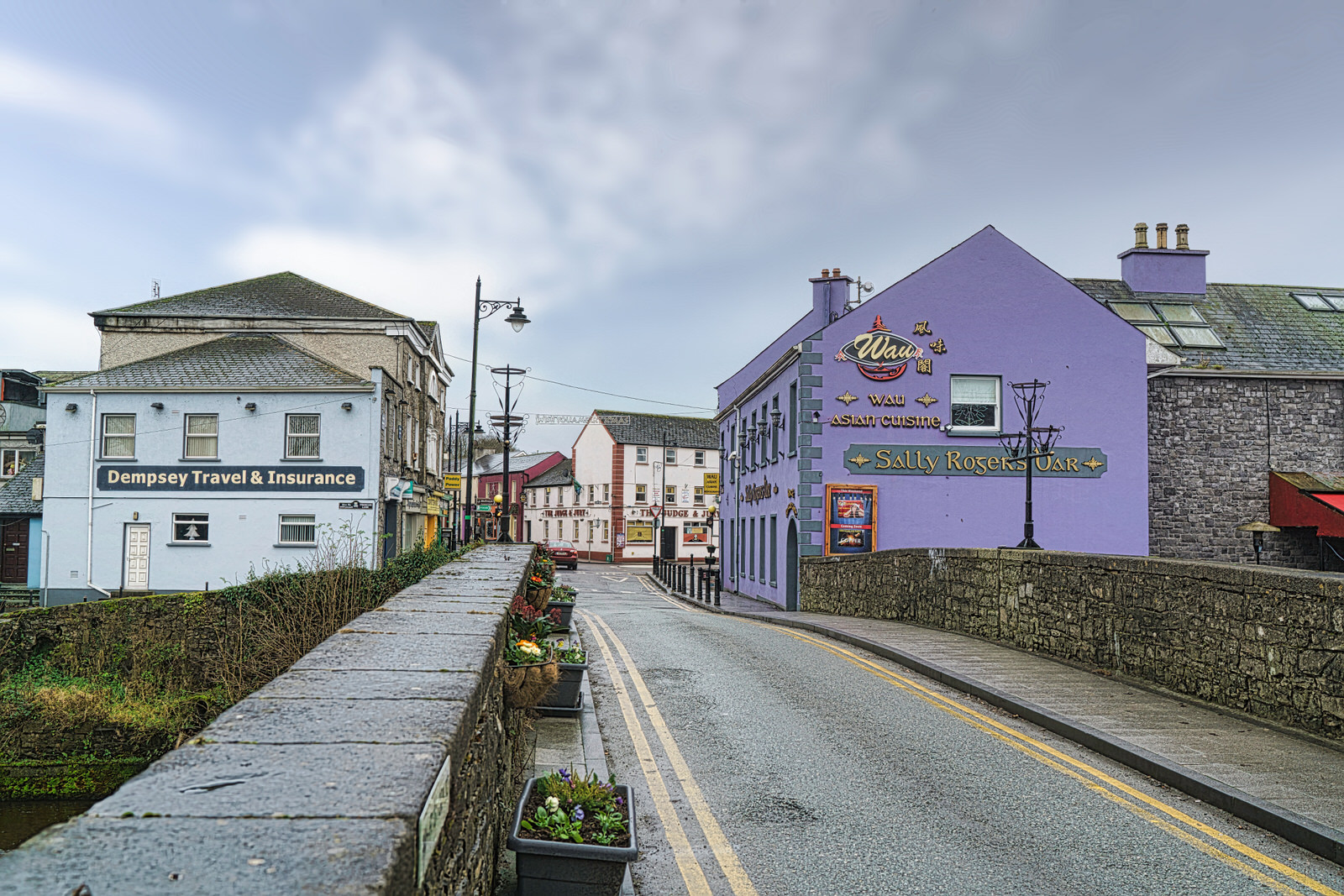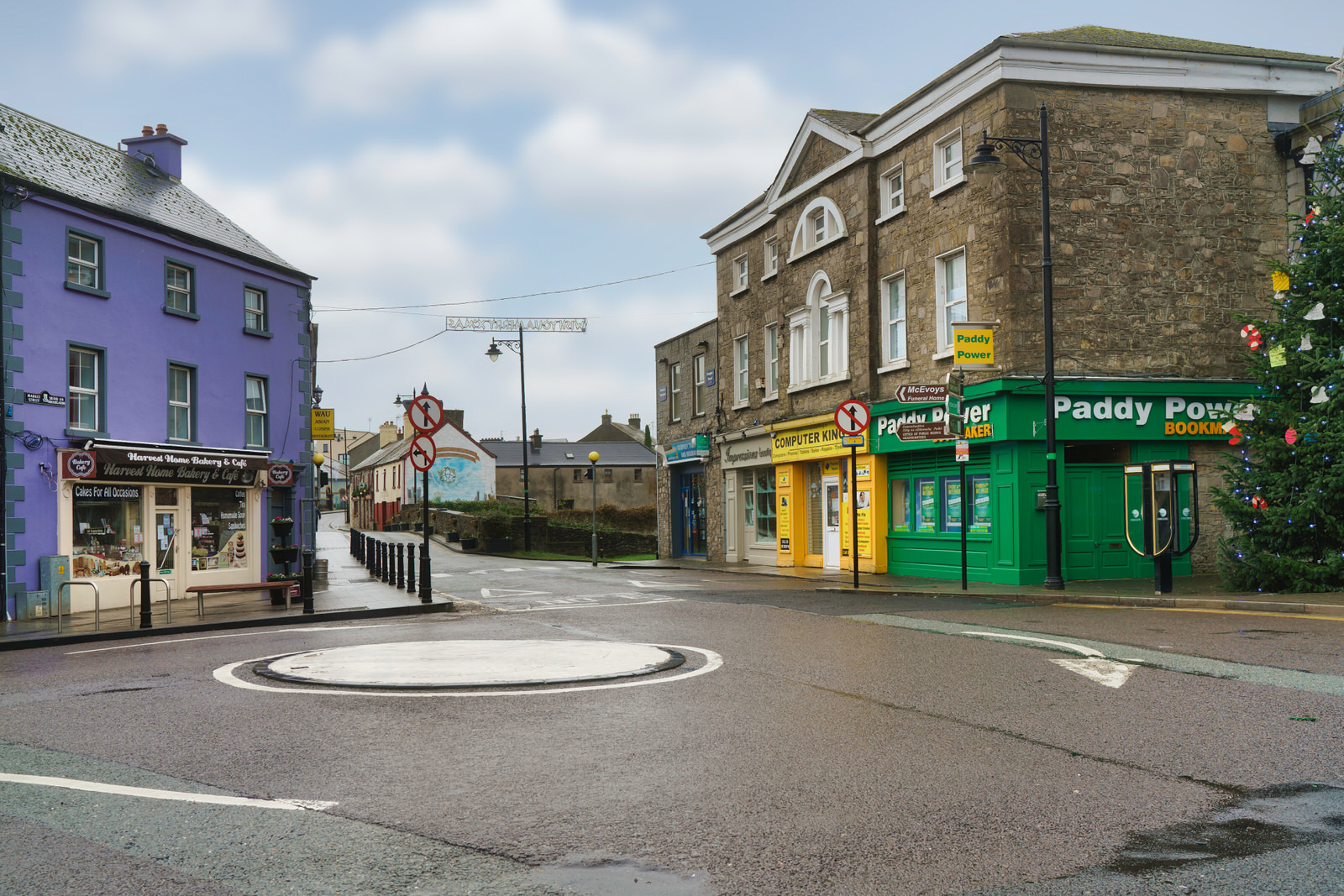DID SOMEONE GET A NEW CHAINSAW
When I visited in April 2016 the one thing that I noticed was that many trees had been cut down and in many cases the wood was red or there was red sawdust on the ground. I assume that trees had to be removed because of various tree diseases such as Beech Dieback.
In recent years, there have been concerns about the health of some of the trees in St. Anne’s Park. This is due to a number of factors, including climate change, pests, and diseases. However, the park’s management is working to address these issues, and they are confident that the trees in St. Anne’s Park will continue to thrive for many years to come.
Beech dieback is a mysterious disease that is killing beech trees in Ireland and other parts of the world. The disease was first identified in Ireland in 2014, and it has since spread to other countries, including the United Kingdom, the Netherlands, and Belgium.
The disease is characterised by a number of symptoms, including:
Dark staining on the leaves
Shrivelled, leathery leaves
Dead buds
Dead branches
Dead trees
The cause of beech dieback is unknown, but it is thought to be caused by a pathogen, such as a virus, bacteria, or fungus. The pathogen is thought to be spread by insects or by windblown spores.
There is no known cure for beech dieback, and trees that are infected with the disease will eventually die. However, there are some steps that can be taken to slow the spread of the disease, such as:
Removing infected trees
Planting resistant beech trees
Maintaining healthy woodlands
The impact of beech dieback on Irish woodlands is still being assessed, but it is likely to be significant. Beech trees are a common and important part of the Irish landscape, and they provide a valuable habitat for wildlife. The loss of beech trees could have a negative impact on biodiversity and on the quality of the environment.
In the meantime, there is a lot of research being done to try to understand the cause of beech dieback and to develop ways to prevent it. It is hoped that a cure will be found in the future, but for now, the best way to protect beech trees is to plant resistant varieties and to maintain healthy woodlands.
![did-someone-get-a-new-chainsaw-[tree-stumps-at-st-anne's-park-in-april-2016]-220146-w1 DID SOMEONE GET A NEW CHAINSAW [TREE STUMPS AT ST ANNE'S PARK IN APRIL 2016] 015](https://excellentstreetimages.com/2016HeadlessPhotoBlogWordPress/wp-content/uploads/2023/07/did-someone-get-a-new-chainsaw-tree-stumps-at-st-annes-park-in-april-2016-220146-w1-1024x768.webp)
![did-someone-get-a-new-chainsaw-[tree-stumps-at-st-anne's-park-in-april-2016]-220147-w1 DID SOMEONE GET A NEW CHAINSAW [TREE STUMPS AT ST ANNE'S PARK IN APRIL 2016] 014](https://excellentstreetimages.com/2016HeadlessPhotoBlogWordPress/wp-content/uploads/2023/07/did-someone-get-a-new-chainsaw-tree-stumps-at-st-annes-park-in-april-2016-220147-w1-1024x768.webp)
![did-someone-get-a-new-chainsaw-[tree-stumps-at-st-anne's-park-in-april-2016]-220151-w1 DID SOMEONE GET A NEW CHAINSAW [TREE STUMPS AT ST ANNE'S PARK IN APRIL 2016] 013](https://excellentstreetimages.com/2016HeadlessPhotoBlogWordPress/wp-content/uploads/2023/07/did-someone-get-a-new-chainsaw-tree-stumps-at-st-annes-park-in-april-2016-220151-w1-1024x768.webp)
![did-someone-get-a-new-chainsaw-[tree-stumps-at-st-anne's-park-in-april-2016]-220152-w1 DID SOMEONE GET A NEW CHAINSAW [TREE STUMPS AT ST ANNE'S PARK IN APRIL 2016] 012](https://excellentstreetimages.com/2016HeadlessPhotoBlogWordPress/wp-content/uploads/2023/07/did-someone-get-a-new-chainsaw-tree-stumps-at-st-annes-park-in-april-2016-220152-w1-1024x768.webp)
![did-someone-get-a-new-chainsaw-[tree-stumps-at-st-anne's-park-in-april-2016]-220153-w1 DID SOMEONE GET A NEW CHAINSAW [TREE STUMPS AT ST ANNE'S PARK IN APRIL 2016] 011](https://excellentstreetimages.com/2016HeadlessPhotoBlogWordPress/wp-content/uploads/2023/07/did-someone-get-a-new-chainsaw-tree-stumps-at-st-annes-park-in-april-2016-220153-w1-1024x768.webp)
![did-someone-get-a-new-chainsaw-[tree-stumps-at-st-anne's-park-in-april-2016]-220154-w1 DID SOMEONE GET A NEW CHAINSAW [TREE STUMPS AT ST ANNE'S PARK IN APRIL 2016] 010](https://excellentstreetimages.com/2016HeadlessPhotoBlogWordPress/wp-content/uploads/2023/07/did-someone-get-a-new-chainsaw-tree-stumps-at-st-annes-park-in-april-2016-220154-w1-1024x768.webp)
![did-someone-get-a-new-chainsaw-[tree-stumps-at-st-anne's-park-in-april-2016]-220155-w1 DID SOMEONE GET A NEW CHAINSAW [TREE STUMPS AT ST ANNE'S PARK IN APRIL 2016] 009](https://excellentstreetimages.com/2016HeadlessPhotoBlogWordPress/wp-content/uploads/2023/07/did-someone-get-a-new-chainsaw-tree-stumps-at-st-annes-park-in-april-2016-220155-w1-1024x768.webp)
![did-someone-get-a-new-chainsaw-[tree-stumps-at-st-anne's-park-in-april-2016]-220156-w1 DID SOMEONE GET A NEW CHAINSAW [TREE STUMPS AT ST ANNE'S PARK IN APRIL 2016] 008](https://excellentstreetimages.com/2016HeadlessPhotoBlogWordPress/wp-content/uploads/2023/07/did-someone-get-a-new-chainsaw-tree-stumps-at-st-annes-park-in-april-2016-220156-w1-1024x768.webp)
![did-someone-get-a-new-chainsaw-[tree-stumps-at-st-anne's-park-in-april-2016]-220157-w1 DID SOMEONE GET A NEW CHAINSAW [TREE STUMPS AT ST ANNE'S PARK IN APRIL 2016] 007](https://excellentstreetimages.com/2016HeadlessPhotoBlogWordPress/wp-content/uploads/2023/07/did-someone-get-a-new-chainsaw-tree-stumps-at-st-annes-park-in-april-2016-220157-w1-1024x768.webp)
![did-someone-get-a-new-chainsaw-[tree-stumps-at-st-anne's-park-in-april-2016]-220158-w1 DID SOMEONE GET A NEW CHAINSAW [TREE STUMPS AT ST ANNE'S PARK IN APRIL 2016] 006](https://excellentstreetimages.com/2016HeadlessPhotoBlogWordPress/wp-content/uploads/2023/07/did-someone-get-a-new-chainsaw-tree-stumps-at-st-annes-park-in-april-2016-220158-w1-1024x768.webp)
![did-someone-get-a-new-chainsaw-[tree-stumps-at-st-anne's-park-in-april-2016]-220159-w1 DID SOMEONE GET A NEW CHAINSAW [TREE STUMPS AT ST ANNE'S PARK IN APRIL 2016] 005](https://excellentstreetimages.com/2016HeadlessPhotoBlogWordPress/wp-content/uploads/2023/07/did-someone-get-a-new-chainsaw-tree-stumps-at-st-annes-park-in-april-2016-220159-w1-1024x768.webp)
![did-someone-get-a-new-chainsaw-[tree-stumps-at-st-anne's-park-in-april-2016]-220160-w1 DID SOMEONE GET A NEW CHAINSAW [TREE STUMPS AT ST ANNE'S PARK IN APRIL 2016] 004](https://excellentstreetimages.com/2016HeadlessPhotoBlogWordPress/wp-content/uploads/2023/07/did-someone-get-a-new-chainsaw-tree-stumps-at-st-annes-park-in-april-2016-220160-w1-1024x768.webp)
![did-someone-get-a-new-chainsaw-[tree-stumps-at-st-anne's-park-in-april-2016]-220148-w1 DID SOMEONE GET A NEW CHAINSAW [TREE STUMPS AT ST ANNE'S PARK IN APRIL 2016] 003](https://excellentstreetimages.com/2016HeadlessPhotoBlogWordPress/wp-content/uploads/2023/07/did-someone-get-a-new-chainsaw-tree-stumps-at-st-annes-park-in-april-2016-220148-w1-1024x768.webp)
![did-someone-get-a-new-chainsaw-[tree-stumps-at-st-anne's-park-in-april-2016]-220149-w1 DID SOMEONE GET A NEW CHAINSAW [TREE STUMPS AT ST ANNE'S PARK IN APRIL 2016] 002](https://excellentstreetimages.com/2016HeadlessPhotoBlogWordPress/wp-content/uploads/2023/07/did-someone-get-a-new-chainsaw-tree-stumps-at-st-annes-park-in-april-2016-220149-w1-1024x768.webp)
![did-someone-get-a-new-chainsaw-[tree-stumps-at-st-anne's-park-in-april-2016]-220150-w1 DID SOMEONE GET A NEW CHAINSAW [TREE STUMPS AT ST ANNE'S PARK IN APRIL 2016] 001](https://excellentstreetimages.com/2016HeadlessPhotoBlogWordPress/wp-content/uploads/2023/07/did-someone-get-a-new-chainsaw-tree-stumps-at-st-annes-park-in-april-2016-220150-w1-1024x768.webp)





![GREYSTONES HARBOUR ON A WET AND WINDY DAY [AS IT WAS 15th APRIL 2016]-214110-1 GREYSTONES HARBOUR ON A WET AND WINDY DAY 002](https://excellentstreetimages.com/2016HeadlessPhotoBlogWordPress/wp-content/uploads/2023/01/GREYSTONES-HARBOUR-ON-A-WET-AND-WINDY-DAY-AS-IT-WAS-15th-APRIL-2016-214110-1-1422x1067.jpg)
![GREYSTONES HARBOUR ON A WET AND WINDY DAY [AS IT WAS 15th APRIL 2016]-214146-1 GREYSTONES HARBOUR ON A WET AND WINDY DAY 037](https://excellentstreetimages.com/2016HeadlessPhotoBlogWordPress/wp-content/uploads/2023/01/GREYSTONES-HARBOUR-ON-A-WET-AND-WINDY-DAY-AS-IT-WAS-15th-APRIL-2016-214146-1-1422x1067.jpg)
![GREYSTONES HARBOUR ON A WET AND WINDY DAY [AS IT WAS 15th APRIL 2016]-214147-1 GREYSTONES HARBOUR ON A WET AND WINDY DAY 036](https://excellentstreetimages.com/2016HeadlessPhotoBlogWordPress/wp-content/uploads/2023/01/GREYSTONES-HARBOUR-ON-A-WET-AND-WINDY-DAY-AS-IT-WAS-15th-APRIL-2016-214147-1-1289x967.jpg)
![GREYSTONES HARBOUR ON A WET AND WINDY DAY [AS IT WAS 15th APRIL 2016]-214143-1 GREYSTONES HARBOUR ON A WET AND WINDY DAY 034](https://excellentstreetimages.com/2016HeadlessPhotoBlogWordPress/wp-content/uploads/2023/01/GREYSTONES-HARBOUR-ON-A-WET-AND-WINDY-DAY-AS-IT-WAS-15th-APRIL-2016-214143-1-1422x1067.jpg)
![GREYSTONES HARBOUR ON A WET AND WINDY DAY [AS IT WAS 15th APRIL 2016]-214144-1 GREYSTONES HARBOUR ON A WET AND WINDY DAY 034](https://excellentstreetimages.com/2016HeadlessPhotoBlogWordPress/wp-content/uploads/2023/01/GREYSTONES-HARBOUR-ON-A-WET-AND-WINDY-DAY-AS-IT-WAS-15th-APRIL-2016-214144-1-1422x1067.jpg)
![GREYSTONES HARBOUR ON A WET AND WINDY DAY [AS IT WAS 15th APRIL 2016]-214141-1 GREYSTONES HARBOUR ON A WET AND WINDY DAY 033](https://excellentstreetimages.com/2016HeadlessPhotoBlogWordPress/wp-content/uploads/2023/01/GREYSTONES-HARBOUR-ON-A-WET-AND-WINDY-DAY-AS-IT-WAS-15th-APRIL-2016-214141-1-1436x1077.jpg)
![GREYSTONES HARBOUR ON A WET AND WINDY DAY [AS IT WAS 15th APRIL 2016]-214142-1 GREYSTONES HARBOUR ON A WET AND WINDY DAY 032](https://excellentstreetimages.com/2016HeadlessPhotoBlogWordPress/wp-content/uploads/2023/01/GREYSTONES-HARBOUR-ON-A-WET-AND-WINDY-DAY-AS-IT-WAS-15th-APRIL-2016-214142-1-1374x1031.jpg)
![GREYSTONES HARBOUR ON A WET AND WINDY DAY [AS IT WAS 15th APRIL 2016]-214138-1 GREYSTONES HARBOUR ON A WET AND WINDY DAY 031](https://excellentstreetimages.com/2016HeadlessPhotoBlogWordPress/wp-content/uploads/2023/01/GREYSTONES-HARBOUR-ON-A-WET-AND-WINDY-DAY-AS-IT-WAS-15th-APRIL-2016-214138-1-1422x1067.jpg)
![GREYSTONES HARBOUR ON A WET AND WINDY DAY [AS IT WAS 15th APRIL 2016]-214139-1 GREYSTONES HARBOUR ON A WET AND WINDY DAY 030](https://excellentstreetimages.com/2016HeadlessPhotoBlogWordPress/wp-content/uploads/2023/01/GREYSTONES-HARBOUR-ON-A-WET-AND-WINDY-DAY-AS-IT-WAS-15th-APRIL-2016-214139-1-1422x1067.jpg)
![GREYSTONES HARBOUR ON A WET AND WINDY DAY [AS IT WAS 15th APRIL 2016]-214140-1 GREYSTONES HARBOUR ON A WET AND WINDY DAY 029](https://excellentstreetimages.com/2016HeadlessPhotoBlogWordPress/wp-content/uploads/2023/01/GREYSTONES-HARBOUR-ON-A-WET-AND-WINDY-DAY-AS-IT-WAS-15th-APRIL-2016-214140-1-1424x1068.jpg)
![GREYSTONES HARBOUR ON A WET AND WINDY DAY [AS IT WAS 15th APRIL 2016]-214136-1 GREYSTONES HARBOUR ON A WET AND WINDY DAY 028](https://excellentstreetimages.com/2016HeadlessPhotoBlogWordPress/wp-content/uploads/2023/01/GREYSTONES-HARBOUR-ON-A-WET-AND-WINDY-DAY-AS-IT-WAS-15th-APRIL-2016-214136-1-1422x1067.jpg)
![GREYSTONES HARBOUR ON A WET AND WINDY DAY [AS IT WAS 15th APRIL 2016]-214137-1 GREYSTONES HARBOUR ON A WET AND WINDY DAY 027](https://excellentstreetimages.com/2016HeadlessPhotoBlogWordPress/wp-content/uploads/2023/01/GREYSTONES-HARBOUR-ON-A-WET-AND-WINDY-DAY-AS-IT-WAS-15th-APRIL-2016-214137-1-1422x1067.jpg)
![GREYSTONES HARBOUR ON A WET AND WINDY DAY [AS IT WAS 15th APRIL 2016]-214134-1 GREYSTONES HARBOUR ON A WET AND WINDY DAY 026](https://excellentstreetimages.com/2016HeadlessPhotoBlogWordPress/wp-content/uploads/2023/01/GREYSTONES-HARBOUR-ON-A-WET-AND-WINDY-DAY-AS-IT-WAS-15th-APRIL-2016-214134-1-1422x1067.jpg)
![GREYSTONES HARBOUR ON A WET AND WINDY DAY [AS IT WAS 15th APRIL 2016]-214135-1 GREYSTONES HARBOUR ON A WET AND WINDY DAY 025](https://excellentstreetimages.com/2016HeadlessPhotoBlogWordPress/wp-content/uploads/2023/01/GREYSTONES-HARBOUR-ON-A-WET-AND-WINDY-DAY-AS-IT-WAS-15th-APRIL-2016-214135-1-1422x1067.jpg)
![GREYSTONES HARBOUR ON A WET AND WINDY DAY [AS IT WAS 15th APRIL 2016]-214131-1 GREYSTONES HARBOUR ON A WET AND WINDY DAY 024](https://excellentstreetimages.com/2016HeadlessPhotoBlogWordPress/wp-content/uploads/2023/01/GREYSTONES-HARBOUR-ON-A-WET-AND-WINDY-DAY-AS-IT-WAS-15th-APRIL-2016-214131-1-1422x1067.jpg)
![GREYSTONES HARBOUR ON A WET AND WINDY DAY [AS IT WAS 15th APRIL 2016]-214132-1 GREYSTONES HARBOUR ON A WET AND WINDY DAY 023](https://excellentstreetimages.com/2016HeadlessPhotoBlogWordPress/wp-content/uploads/2023/01/GREYSTONES-HARBOUR-ON-A-WET-AND-WINDY-DAY-AS-IT-WAS-15th-APRIL-2016-214132-1-1422x1067.jpg)
![GREYSTONES HARBOUR ON A WET AND WINDY DAY [AS IT WAS 15th APRIL 2016]-214133-1 GREYSTONES HARBOUR ON A WET AND WINDY DAY 022](https://excellentstreetimages.com/2016HeadlessPhotoBlogWordPress/wp-content/uploads/2023/01/GREYSTONES-HARBOUR-ON-A-WET-AND-WINDY-DAY-AS-IT-WAS-15th-APRIL-2016-214133-1-1422x1067.jpg)
![GREYSTONES HARBOUR ON A WET AND WINDY DAY [AS IT WAS 15th APRIL 2016]-214129-1 GREYSTONES HARBOUR ON A WET AND WINDY DAY 021](https://excellentstreetimages.com/2016HeadlessPhotoBlogWordPress/wp-content/uploads/2023/01/GREYSTONES-HARBOUR-ON-A-WET-AND-WINDY-DAY-AS-IT-WAS-15th-APRIL-2016-214129-1-1422x1067.jpg)
![GREYSTONES HARBOUR ON A WET AND WINDY DAY [AS IT WAS 15th APRIL 2016]-214130-1 GREYSTONES HARBOUR ON A WET AND WINDY DAY 020](https://excellentstreetimages.com/2016HeadlessPhotoBlogWordPress/wp-content/uploads/2023/01/GREYSTONES-HARBOUR-ON-A-WET-AND-WINDY-DAY-AS-IT-WAS-15th-APRIL-2016-214130-1-1422x1067.jpg)
![GREYSTONES HARBOUR ON A WET AND WINDY DAY [AS IT WAS 15th APRIL 2016]-214127-1 GREYSTONES HARBOUR ON A WET AND WINDY DAY 019](https://excellentstreetimages.com/2016HeadlessPhotoBlogWordPress/wp-content/uploads/2023/01/GREYSTONES-HARBOUR-ON-A-WET-AND-WINDY-DAY-AS-IT-WAS-15th-APRIL-2016-214127-1-1422x1067.jpg)
![GREYSTONES HARBOUR ON A WET AND WINDY DAY [AS IT WAS 15th APRIL 2016]-214128-1 GREYSTONES HARBOUR ON A WET AND WINDY DAY 018](https://excellentstreetimages.com/2016HeadlessPhotoBlogWordPress/wp-content/uploads/2023/01/GREYSTONES-HARBOUR-ON-A-WET-AND-WINDY-DAY-AS-IT-WAS-15th-APRIL-2016-214128-1-1422x1067.jpg)
![GREYSTONES HARBOUR ON A WET AND WINDY DAY [AS IT WAS 15th APRIL 2016]-214124-1 GREYSTONES HARBOUR ON A WET AND WINDY DAY 017](https://excellentstreetimages.com/2016HeadlessPhotoBlogWordPress/wp-content/uploads/2023/01/GREYSTONES-HARBOUR-ON-A-WET-AND-WINDY-DAY-AS-IT-WAS-15th-APRIL-2016-214124-1-1422x1067.jpg)
![GREYSTONES HARBOUR ON A WET AND WINDY DAY [AS IT WAS 15th APRIL 2016]-214125-1 GREYSTONES HARBOUR ON A WET AND WINDY DAY 016](https://excellentstreetimages.com/2016HeadlessPhotoBlogWordPress/wp-content/uploads/2023/01/GREYSTONES-HARBOUR-ON-A-WET-AND-WINDY-DAY-AS-IT-WAS-15th-APRIL-2016-214125-1-1422x1067.jpg)
![GREYSTONES HARBOUR ON A WET AND WINDY DAY [AS IT WAS 15th APRIL 2016]-214126-1 GREYSTONES HARBOUR ON A WET AND WINDY DAY 015](https://excellentstreetimages.com/2016HeadlessPhotoBlogWordPress/wp-content/uploads/2023/01/GREYSTONES-HARBOUR-ON-A-WET-AND-WINDY-DAY-AS-IT-WAS-15th-APRIL-2016-214126-1-1422x1067.jpg)
![GREYSTONES HARBOUR ON A WET AND WINDY DAY [AS IT WAS 15th APRIL 2016]-214122-1 GREYSTONES HARBOUR ON A WET AND WINDY DAY 014](https://excellentstreetimages.com/2016HeadlessPhotoBlogWordPress/wp-content/uploads/2023/01/GREYSTONES-HARBOUR-ON-A-WET-AND-WINDY-DAY-AS-IT-WAS-15th-APRIL-2016-214122-1-1422x1067.jpg)
![GREYSTONES HARBOUR ON A WET AND WINDY DAY [AS IT WAS 15th APRIL 2016]-214123-1 GREYSTONES HARBOUR ON A WET AND WINDY DAY 013](https://excellentstreetimages.com/2016HeadlessPhotoBlogWordPress/wp-content/uploads/2023/01/GREYSTONES-HARBOUR-ON-A-WET-AND-WINDY-DAY-AS-IT-WAS-15th-APRIL-2016-214123-1-1422x1067.jpg)
![GREYSTONES HARBOUR ON A WET AND WINDY DAY [AS IT WAS 15th APRIL 2016]-214120-1 GREYSTONES HARBOUR ON A WET AND WINDY DAY 012](https://excellentstreetimages.com/2016HeadlessPhotoBlogWordPress/wp-content/uploads/2023/01/GREYSTONES-HARBOUR-ON-A-WET-AND-WINDY-DAY-AS-IT-WAS-15th-APRIL-2016-214120-1-1422x1067.jpg)
![GREYSTONES HARBOUR ON A WET AND WINDY DAY [AS IT WAS 15th APRIL 2016]-214121-1 GREYSTONES HARBOUR ON A WET AND WINDY DAY 011](https://excellentstreetimages.com/2016HeadlessPhotoBlogWordPress/wp-content/uploads/2023/01/GREYSTONES-HARBOUR-ON-A-WET-AND-WINDY-DAY-AS-IT-WAS-15th-APRIL-2016-214121-1-1422x1067.jpg)
![GREYSTONES HARBOUR ON A WET AND WINDY DAY [AS IT WAS 15th APRIL 2016]-214118-1 GREYSTONES HARBOUR ON A WET AND WINDY DAY 010](https://excellentstreetimages.com/2016HeadlessPhotoBlogWordPress/wp-content/uploads/2023/01/GREYSTONES-HARBOUR-ON-A-WET-AND-WINDY-DAY-AS-IT-WAS-15th-APRIL-2016-214118-1-1422x1067.jpg)
![GREYSTONES HARBOUR ON A WET AND WINDY DAY [AS IT WAS 15th APRIL 2016]-214119-1 GREYSTONES HARBOUR ON A WET AND WINDY DAY 009](https://excellentstreetimages.com/2016HeadlessPhotoBlogWordPress/wp-content/uploads/2023/01/GREYSTONES-HARBOUR-ON-A-WET-AND-WINDY-DAY-AS-IT-WAS-15th-APRIL-2016-214119-1-1422x1067.jpg)
![GREYSTONES HARBOUR ON A WET AND WINDY DAY [AS IT WAS 15th APRIL 2016]-214115-1 GREYSTONES HARBOUR ON A WET AND WINDY DAY 008](https://excellentstreetimages.com/2016HeadlessPhotoBlogWordPress/wp-content/uploads/2023/01/GREYSTONES-HARBOUR-ON-A-WET-AND-WINDY-DAY-AS-IT-WAS-15th-APRIL-2016-214115-1-1422x1067.jpg)
![GREYSTONES HARBOUR ON A WET AND WINDY DAY [AS IT WAS 15th APRIL 2016]-214116-1 GREYSTONES HARBOUR ON A WET AND WINDY DAY 007](https://excellentstreetimages.com/2016HeadlessPhotoBlogWordPress/wp-content/uploads/2023/01/GREYSTONES-HARBOUR-ON-A-WET-AND-WINDY-DAY-AS-IT-WAS-15th-APRIL-2016-214116-1-1422x1067.jpg)
![GREYSTONES HARBOUR ON A WET AND WINDY DAY [AS IT WAS 15th APRIL 2016]-214117-1 GREYSTONES HARBOUR ON A WET AND WINDY DAY 006](https://excellentstreetimages.com/2016HeadlessPhotoBlogWordPress/wp-content/uploads/2023/01/GREYSTONES-HARBOUR-ON-A-WET-AND-WINDY-DAY-AS-IT-WAS-15th-APRIL-2016-214117-1-1397x1048.jpg)
![GREYSTONES HARBOUR ON A WET AND WINDY DAY [AS IT WAS 15th APRIL 2016]-214112-1 GREYSTONES HARBOUR ON A WET AND WINDY DAY 005](https://excellentstreetimages.com/2016HeadlessPhotoBlogWordPress/wp-content/uploads/2023/01/GREYSTONES-HARBOUR-ON-A-WET-AND-WINDY-DAY-AS-IT-WAS-15th-APRIL-2016-214112-1-1422x1067.jpg)
![GREYSTONES HARBOUR ON A WET AND WINDY DAY [AS IT WAS 15th APRIL 2016]-214113-1 GREYSTONES HARBOUR ON A WET AND WINDY DAY 004](https://excellentstreetimages.com/2016HeadlessPhotoBlogWordPress/wp-content/uploads/2023/01/GREYSTONES-HARBOUR-ON-A-WET-AND-WINDY-DAY-AS-IT-WAS-15th-APRIL-2016-214113-1-1422x1067.jpg)
![GREYSTONES HARBOUR ON A WET AND WINDY DAY [AS IT WAS 15th APRIL 2016]-214114-1 GREYSTONES HARBOUR ON A WET AND WINDY DAY 003](https://excellentstreetimages.com/2016HeadlessPhotoBlogWordPress/wp-content/uploads/2023/01/GREYSTONES-HARBOUR-ON-A-WET-AND-WINDY-DAY-AS-IT-WAS-15th-APRIL-2016-214114-1-1344x1008.jpg)
![GREYSTONES HARBOUR ON A WET AND WINDY DAY [AS IT WAS 15th APRIL 2016]-214111-1 GREYSTONES HARBOUR ON A WET AND WINDY DAY 001](https://excellentstreetimages.com/2016HeadlessPhotoBlogWordPress/wp-content/uploads/2023/01/GREYSTONES-HARBOUR-ON-A-WET-AND-WINDY-DAY-AS-IT-WAS-15th-APRIL-2016-214111-1-1422x1067.jpg)